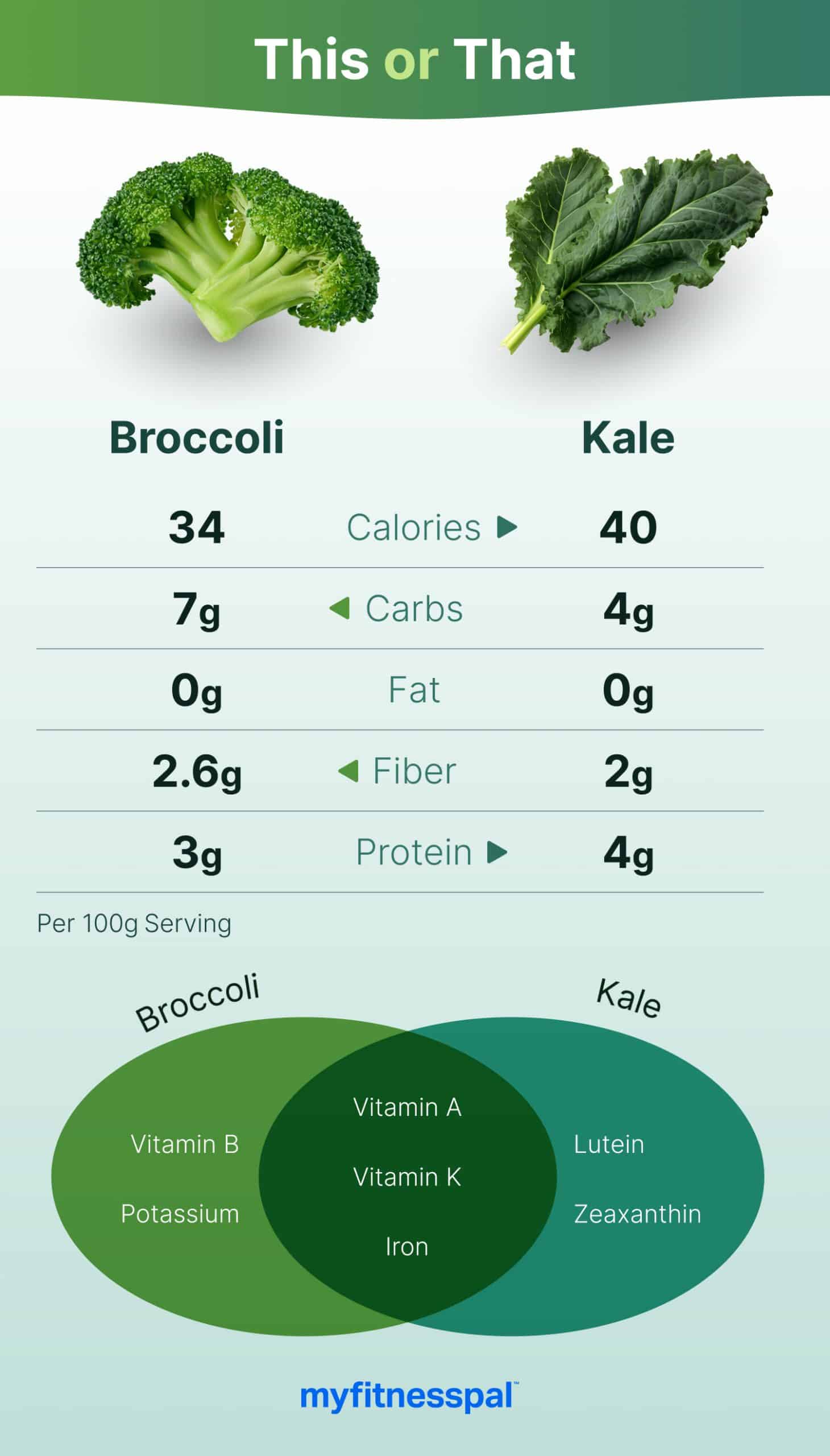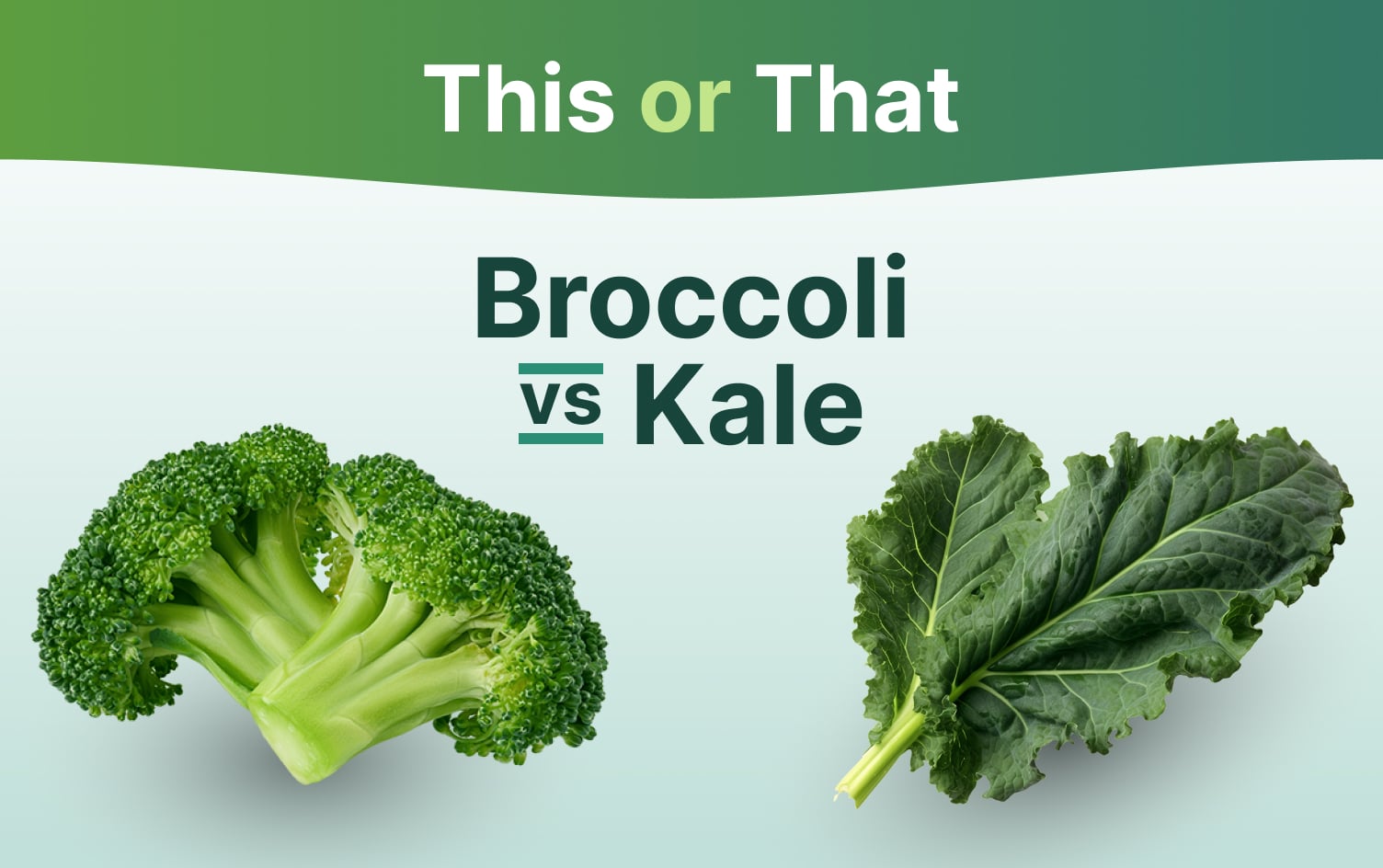From a nutritional standpoint, kale and broccoli are both winners — they’re high in vitamins, minerals, antioxidants and fiber — all of which are important components of a healthy diet. They are both cruciferous vegetables that come from the Brassica family. Other vegetables in the same family include Brussels sprouts, cauliflower, arugula and radishes. Cruciferous vegetables have sulfur-containing chemicals called glucosinolates. When digested, glucosinolates break down into various compounds that have been studied for their potential anti-cancer effects. While more studies on humans are needed, various data shows individuals who consume cruciferous vegetables regularly may have a lower risk of some cancers.
Still, you might wonder if one is superior to the other, and, given the choice, should you choose kale or broccoli? Many factors play into this decision including nutrition, taste, texture and cooking/preparation methods.

Energy, or calories, as well as fat content are fairly low for both kale and broccoli, and you get a lot of nutrients in a small package.
Some have proclaimed kale a superfood since it’s high in vitamins A, K, iron, folate, calcium and anti-inflammatory antioxidants like lutein and zeaxanthin, key for promoting eye health. Kale is also high in protein, and gives you slightly more of the macronutrient than broccoli.
Broccoli is a good source of B vitamins and potassium. It also contains similar vitamins and minerals to kale such as vitamins A, K and iron. Compared to kale, broccoli is slightly higher in fiber and carbs.
TASTE, TEXTURE AND PREPARATION
KALE
Raw kale has a more bitter taste compared to broccoli, and alone, is rather unappetizing. Instead, consider kale a blank canvas to dress up. For example, massage raw kale with a little olive oil, lemon juice and garlic until it softens. It keeps well in the fridge (because it’s so dense) for a few days if you make a big batch. You can add it to grain bowls, use it as a salad base or even serve it with your morning eggs.
Kale can also be sautéed with garlic and oil for more flavor, or roasted and made into veggie chips that can be topped with things like nutritional yeast for extra protein, Parmesan cheese or truffle salt. Kale can also be finely chopped and added to soups, stews and even tomato sauce to boost nutrient content.
BROCCOLI
Like most cruciferous vegetables, broccoli has a crunchy texture that requires a good amount of chewing. This can help you slow down and eat more mindfully. Broccoli can easily serve as a snack in its raw form, especially when paired with a tasty, nutrient-rich sauce. Roasting broccoli with olive oil, sea salt and pepper is a fantastic way to allow it to caramelize a bit and completely change its flavor profile. Sautéing broccoli with other veggies, a protein source and quality oil (like avocado) can also soften it up a bit and bring out more flavor, especially when topped with herbs and spices. Steaming broccoli is one of the simplest ways to cook it, and it can easily be livened up with a dash of lemon juice and a sprinkle of crushed red pepper.
THE BOTTOM LINE
We also know eating a diet with a variety of plant foods can help reduce risk for chronic disease, support the immune system and promote general health. Broccoli and kale are two plant foods that can (and should) be a part of your regular meal rotation, if you like them. Since they are so similar nutritionally, think about what sort of preparation method you’re using, other components to the meal and what sounds good to you at the time when trying to choose between the two. As long as you’re doing that, it’s nearly impossible to go wrong.
Discover hundreds of healthy recipes including kale and broccoli via “Recipe Discovery” in the MyFitnessPal app.




